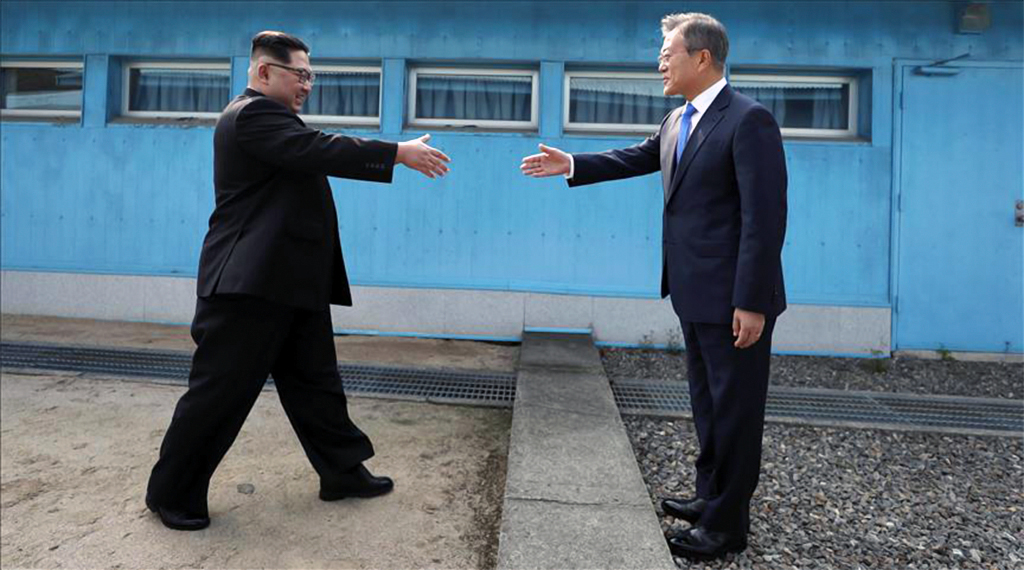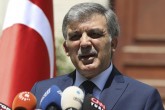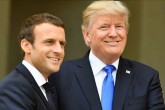This week we were busy along with colleagues organizing the First International Congress on “Korea and the Muslim World: Historical and Cultural Encounters” in Istanbul as a joint initiative of the Research Center for Islamic History, Art and Culture (IRCICA), which is the cultural subsidiary of the Organisation of Islamic Cooperation (OIC) and the Hanyang University of Korea. Over 20 renown experts from around the world specializing on history, sociology, anthropology, international relations, cultural studies and economics discussed the multifaceted relations between Korea and the Muslim world for two days as a sign of Seoul’s intention to intensify interactions at all levels. But while the enthusiastic scientific proceedings were on course, something more important was about the happen thousands of miles away regarding the futures of both South and North Korea. Following months of preparatory work, backdoor diplomacy and ice-breaking meetings, global public opinion was braced for a historic summit that might well have crucial repercussions for global peace: The first Inter-Korean Summit to be held in more than a decade at the level of political leaders.
It was a truly historic seen that would probably be placed in the “road to peace” chapter of relevant textbooks when the enigmatic leader of North Korea, Kim Jong Un, emerged from the northern part of the truce village of Panmunjom and walked down the stairs toward South Korean President Moon Jae-in to realize the highest-level encounter yet in a whirlwind of nuclear diplomacy. This vital handshake with smiling faces was performed at the most symbolic of locations, the demarcation line that represents one of the last physical remnants of the Cold War in the world, sharply separating two peoples that speak the same language and come from the same ethnic and cultural roots. Holding hands and keeping their wide smiles, the leaders posed to the Korean media on both sides of the military demarcation line as a gesture of good will. Expectedly, every single step of this initial meeting was carefully choreographed in order to constitute the positive perceptive atmosphere required for complicated peace talks that will follow. Some of the initial groundwork for the summit was laid during the opening ceremony of the PyeongChang Winter Olympics in February when President Moon and the sister of Kim Jong Un, Kim Yo Jong, met and exchanged ideas particularly on denuclearization, while the national teams of both countries entered the stadium together.
On Friday, the public mood was stunningly in contrast with that of last year when North Korea carried out the sixth and the largest nuclear test in history and launched intercontinental missiles that are capable of reaching the American mainland. By then, the U.S. was identifying Pyongyang as a totalitarian regime endangering global peace via its nuclear tests, while President Kim and President Donald Trump were openly trading insults and threats of war via social media. Formally speaking, Washington deems North Korean claims that it needs nuclear weapons to protect its national security against a potential U.S. invasion absurd and demands Pyongyang to categorically give up its nuclear program, paving the way for a total denuclearization of the peninsula. Therefore, while the Inter-Korean peace summit was largely interpreted as a preparatory step to lay the groundwork for the highly anticipated encounter between two highly unpredictable leaders, Kim and Trump, it was interesting to note that Pyongyang announced a moratorium on nuclear tests and intercontinental ballistic missile launches declaring that they completed their mission.
On his part, Kim has already offered to place denuclearization on the table in exchange for guarantees for the national security of North Korea. He also paid his first official overseas trip to Beijing, most probably to discuss the future course of action to be followed during negotiations in coordination with close ally China. Needless to say, Pyongyang’s atomic arsenal and hostile attitude toward Washington constitute an indirect element of geostrategic leverage for Beijing in its recently deteriorating relations with the U.S. in the wake of tariff disputes.As Presidents Moon and Kim conduct early rounds of peace negotiations, the issue of denuclearization and drawing up a formal peace treaty to officially end the Korean War will be high on the agenda. As an economic and technological powerhouse leading research, development and innovation on the world stage, South Korea needs peace, stability and predictability away from the vagaries of nuclear threats. The North, meanwhile, is in desperate need for economic support to finance food and vital supplies for its population suffering under heavy sanctions imposed by the U.N. targeting its fishing, textiles and mining sectors, as well as oil imports. These peace negotiations might be construed as a pragmatic step by Pyongyang designed to gain time and extract economic support without conceding many concessions on the nuclear front. But both Seoul and Washington would be willing to observe concrete steps toward denuclearization until their attitude becomes visibly softer on the sanctions.
[Daily Sabah, 28 April 2018]


